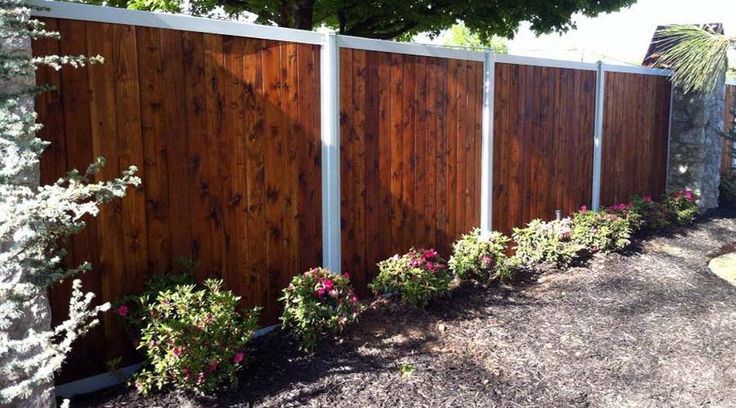When choosing fencing in arid environments, consider materials such as metal or vinyl for durability against extreme weather conditions. These materials are more resistant to rot and corrosion, making them suitable for arid climates.
In arid environments, it’s essential to prioritize fencing materials that can withstand harsh sun exposure and minimal moisture.
Additionally, taking into account the landscape and potential wildlife threats can help determine the most suitable fencing options.
Proper installation and regular maintenance also contribute to the longevity of the fence in arid surroundings.
By carefully considering these factors, you can ensure that the chosen fencing meets the unique challenges of an arid environment.

Climate And Soil Considerations
In arid environments, choosing the right fencing is crucial to withstand the harsh conditions.
It’s important to consider the local climate and soil conditions when selecting fencing materials.
Understanding the impact of these factors will help ensure the longevity and effectiveness of your fence.
Understanding The Local Climate
When choosing fencing for arid environments, it’s essential to have a thorough understanding of the local climate.
Arid regions typically experience hot, dry summers with minimal rainfall and fluctuating temperatures.
To mitigate this, consider materials that are resistant to UV damage, heat, and extreme temperature changes.
A prime example of this is the range of products offered by Fence Vacaville, a company specializing in durable fencing solutions ideal for arid climates.
Their expertise in selecting materials that can withstand harsh environmental conditions ensures that your fencing investment is both aesthetically pleasing and long-lasting.
Impact Of Arid Soil Conditions On Fencing Materials
The soil in arid environments tends to be dry, sandy, and low in organic matter, which can affect the stability and longevity of a fence.
Certain fencing materials may corrode or deteriorate more rapidly in arid soil conditions, leading to structural weakness and premature damage.
For optimal durability, choose fencing materials that are resistant to corrosion, can withstand minimal soil moisture, and have strong anchoring capabilities to endure challenging soil conditions.
Suitable Fencing Materials
Suitable fencing materials are crucial for arid environments to withstand extreme temperatures and minimal maintenance requirements.
When choosing fencing materials for arid environments, it is important to consider durability and resistance to extreme temperatures as well as the maintenance requirements specific to these conditions.
Durability And Resistance To Extreme Temperatures
The durability and resistance to extreme temperatures of fencing materials are essential factors to consider when selecting fencing for arid environments.
In extreme heat and dry conditions, materials that can withstand prolonged exposure to sunlight and high temperatures without warping, fading, or becoming brittle are highly desirable.
Look for materials such as metal alloys, composite materials, and certain types of treated wood that have been specifically designed to withstand the harsh conditions of arid environments.
Maintenance Requirements For Arid Environments
When selecting fencing materials for arid environments, it is important to consider the maintenance requirements specific to these conditions.
In regions with low precipitation and minimal vegetation, the build-up of dust, dirt, and debris on fencing can be more noticeable and potentially impact the appearance and integrity of the structure.
Opt for materials that are easy to clean and maintain, such as smooth metal surfaces or treated wood that resists decay and rot in arid conditions.
Additionally, consider the long-term maintenance costs associated with each material to ensure that the chosen fencing option remains cost-effective in the long run.
Cost-effective Design And Installation
When it comes to fencing in arid environments, it’s essential to consider cost-effective design and installation.
From budgeting for materials and labor to efficient installation techniques, making informed decisions can ensure a durable and practical fencing solution for arid conditions.
Let’s explore some tips for choosing fencing that saves costs while ensuring quality.
Budgeting For Materials And Labor
Budgeting for fencing materials and labor is a crucial step in achieving a cost-effective design and installation.
Prioritize the selection of durable materials that withstand arid conditions, minimizing the need for frequent repairs or replacements.
While researching materials, consider the long-term maintenance costs to make an informed decision on the most cost-effective options.
Efficient Installation Techniques For Arid Conditions
When installing a fence in an arid environment, it’s important to use efficient techniques to ensure the longevity of the structure.
Consider pre-fabricated panels that require minimal on-site assembly, reducing labor costs and installation time.
Additionally, opting for composite or metal fencing materials can offer long-term durability in arid climates, reducing the frequency of maintenance and repairs.

Frequently Asked Questions
What Is The Best Fencing For The Desert?
The best fencing for the desert is one that is durable and able to withstand the harsh climate.
Options such as chain link or barbed wire are commonly used due to their strength and low maintenance requirements. Additionally, the fencing should be tall enough to keep wildlife out.
What Is The Best Fence For Hot Weather?
The best fence for hot weather is vinyl, aluminum, or composite material. These options are durable and low maintenance, withstanding extreme temperatures.
They also provide good privacy and curb appeal. Regular cleaning and maintenance will ensure longevity and performance in hot climates.
What Factors To Consider When Selecting Fencing Materials?
When selecting fencing materials, consider factors like durability, maintenance needs, cost, and aesthetic appeal.
Evaluate the material’s suitability for your specific purpose and climate. Ensure that the material meets any local regulations or homeowner association requirements.
Conclusion
Choosing the right fencing for arid environments is crucial for maintaining security and aesthetic appeal.
Considering factors such as weather resistance, material durability, and maintenance requirements will ensure a long-lasting and functional solution for your property.
With these tips in mind, you can confidently select a fencing option that meets your needs in arid environments.







